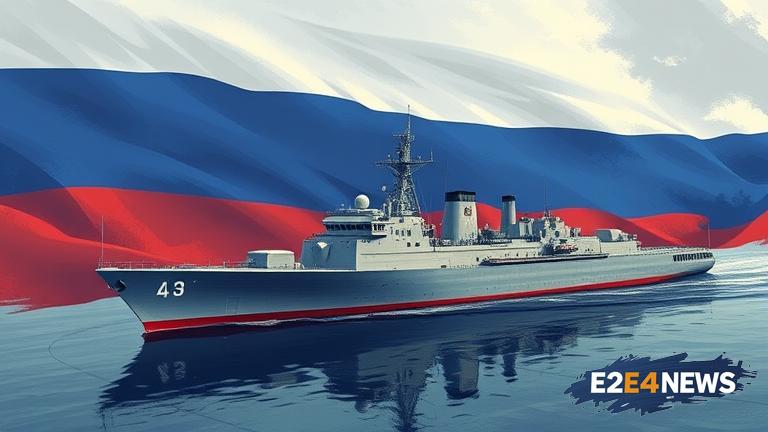On Navy Day, Russian President Vladimir Putin unveiled the country’s ambitious 2050 navy blueprint, which aims to significantly enhance its naval capabilities. The plan outlines a comprehensive approach to developing the Russian Navy, with a focus on modernizing its fleet, improving its operational effectiveness, and expanding its presence in key regions. According to Putin, the new blueprint is designed to ensure the Russian Navy’s ability to protect the country’s national interests and maintain its position as a global maritime power. The plan includes the development of new warships, submarines, and other naval vessels, as well as the modernization of existing ones. Russia also plans to improve its naval infrastructure, including the construction of new ports and shipyards. The 2050 navy blueprint is part of Russia’s broader efforts to strengthen its military capabilities and enhance its global influence. The plan is expected to have significant implications for the global maritime landscape, particularly in regions such as the Arctic and the Black Sea. Russia’s naval expansion is also likely to be closely watched by other major maritime powers, including the United States, China, and the European Union. The Russian Navy has been undergoing significant modernization efforts in recent years, with a focus on developing new capabilities such as hypersonic missiles and advanced submarines. The 2050 navy blueprint is expected to further accelerate these efforts, with a focus on developing a more agile and effective naval force. Putin emphasized the importance of the Russian Navy in protecting the country’s national interests and maintaining its position as a global maritime power. He also highlighted the need for the Russian Navy to be able to operate effectively in a rapidly changing global environment. The 2050 navy blueprint includes a range of specific initiatives, including the development of new warships and submarines, the modernization of existing vessels, and the improvement of naval infrastructure. Russia also plans to enhance its naval cooperation with other countries, particularly in regions such as the Arctic and the Indian Ocean. The plan is expected to have significant economic implications, with the development of new naval capabilities and infrastructure likely to drive growth and create new jobs. The 2050 navy blueprint is also likely to have significant environmental implications, particularly in regions such as the Arctic, where Russia’s naval expansion is expected to have a major impact. Overall, the 2050 navy blueprint represents a major milestone in Russia’s efforts to strengthen its naval capabilities and enhance its global influence. The plan is expected to have significant implications for the global maritime landscape and is likely to be closely watched by other major maritime powers. Russia’s naval expansion is also likely to have significant economic and environmental implications, particularly in regions such as the Arctic and the Black Sea. The Russian Navy’s modernization efforts are expected to continue to be a major focus of the country’s military development in the coming years. The 2050 navy blueprint is a key part of these efforts, and is expected to play a major role in shaping the future of the Russian Navy. Putin’s unveiling of the 2050 navy blueprint on Navy Day marked an important milestone in the development of the Russian Navy, and is likely to be remembered as a significant moment in the country’s maritime history. The plan is expected to have a major impact on the global maritime landscape, and is likely to be closely watched by other major maritime powers. Russia’s naval expansion is also likely to have significant implications for the country’s economy and environment, particularly in regions such as the Arctic and the Black Sea.
